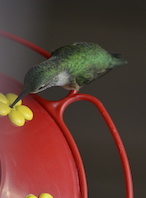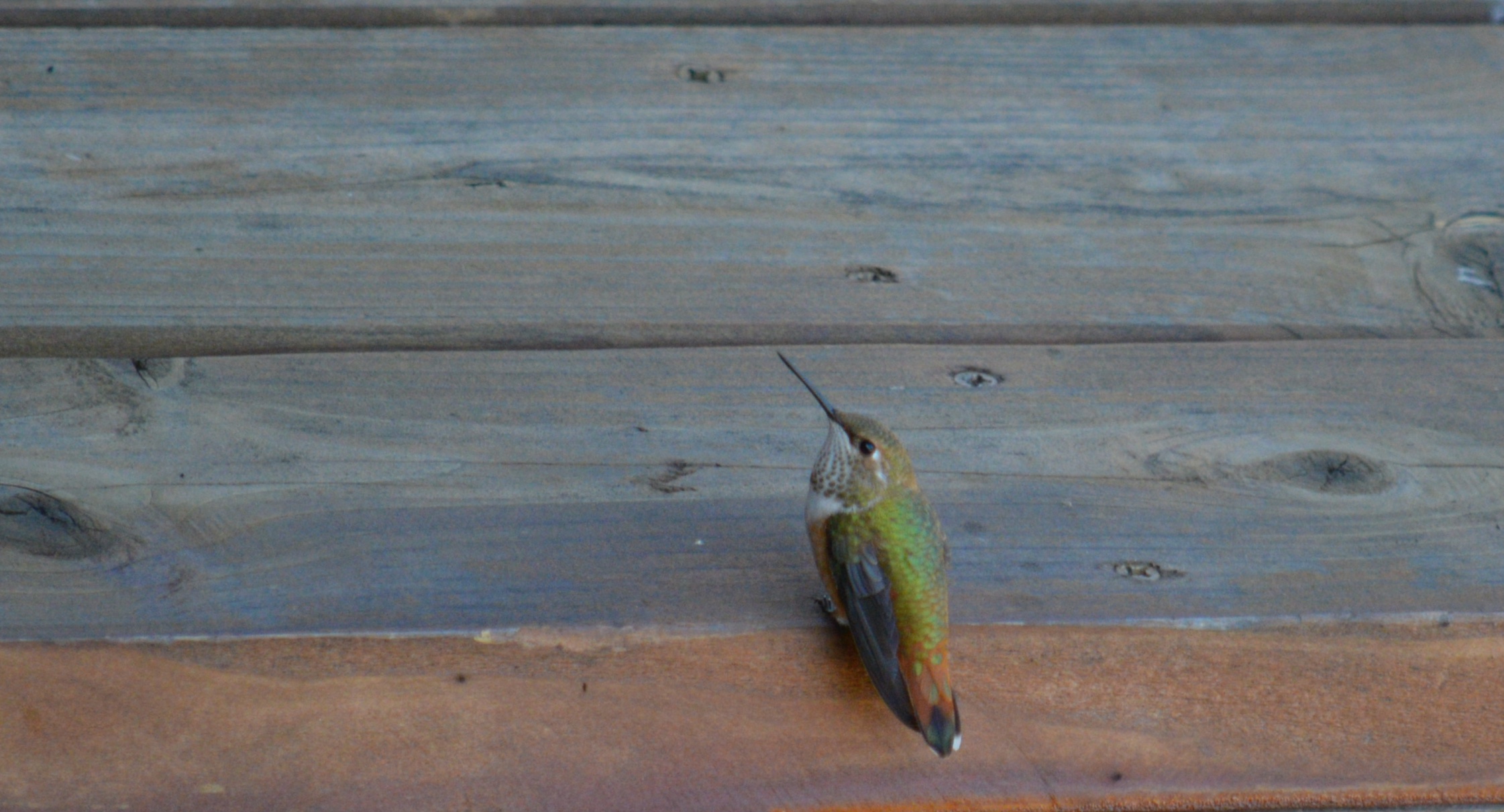Every spring and late summer, the hummingbirds stop by to visit the milkweed, lantana bushes, and the sugar water we set out for them. For several weeks, they keep us company during our morning coffee and end each day in a flutter of activity among the blooming plants and trees.
As I watch the tiny hummingbirds dart and swoop through the palm tree, I wonder how they keep that pace. What does the hummingbird know that I do not? Is there a lesson they have come to teach me?
Facts about the daring hummingbird
The hummingbird belongs to the Trochilidae family of birds. These small birds weigh only 2 to 20 grams. Their sharp sword-like bills allow them to dig deep to drink the nectar of their favorite colorful flowers. Did you know?
- The bee hummingbird of Cuba is so small you could mail 16 of them in a first-class letter
- Two tiny pea-sized eggs of the ruby-throated hummingbird fit in a walnut-size nest
- Hummingbirds are the only vertebrates that can hover in flight, and can fly backward and upside down
- Their stamina allows them to fly 30 mph and 45 mph during a courtship dive
- They have no problem flying for 18-20 hours straight while their heartbeats 225 times per minute
- Hummingbirds retreat into torpor—a very deep sleep where their metabolism slows to a minimum to rejuvenate
- Hummingbirds do not socialize and live in constant competition for a limited supply of flower nectar
What did I learn from the daring hummingbird?
If you think of the size of the hummingbird, the poor creature should not have a chance in nature. The hummingbird doesn’t know what she cannot do. She uses what she has to survive and serves as a special pollinator for plants that can’t broadcast seeds.
The hummingbird knows the purpose.
The small bird who can fly across the Gulf of Mexico never stops to ponder fear or question the purpose of the flight. Using every gift, the tiny vulnerable bird beats the odds every day.
The hummingbird knows resilience.
Although not the most sociable of species, the hummingbird contributes to the sustainability of our earth. Playing a small, but powerful role, hummingbirds keep other plant species alive so they can serve their purpose. The cycle of life continues because hummingbirds do what only they can do with their special gifts.
The hummingbird knows giving.
A tanka for my lessons learned

Resting and watching
I drink deep into my soul
Heart beating faster
I dare the impossible
Even small wings can fly far.
Three Takeaways
- Live your life with purpose. Even if you don’t think you know, the why for every action and decision lives inside you. My why? Help others be and become their best.
- Build resilience through taking care of yourself and becoming more aware of your needs. Practice mindfulness—appreciate the moment. Seek supportive relationships. Allow your purpose to guide you along the way.
- Use the gifts that belong to only you to make a difference in the world. Your contribution may seem small and insignificant. We never know the impact of one small act of generosity. Give your best anyway.
We’re constantly being bombarded by problems that we face and sometimes we can get completely overwhelmed. [But] we should always feel like a hummingbird. I may feel insignificant, but I don’t want to be like the other animals watching the planet go down the drain. I’ll be a hummingbird, I’ll do the best I can.
—Wangari Maathai
My thanks to Geetika Sethi and to Deborah Christensen for her PROMPT: Write a haiku or tanka using the prompt word “bird” (or a derivative).
One small word can unleash a universe of creativity.
And always—
Be kind. Be brave. Be you.
Photos: © Kathryn LeRoy


Leave A Comment